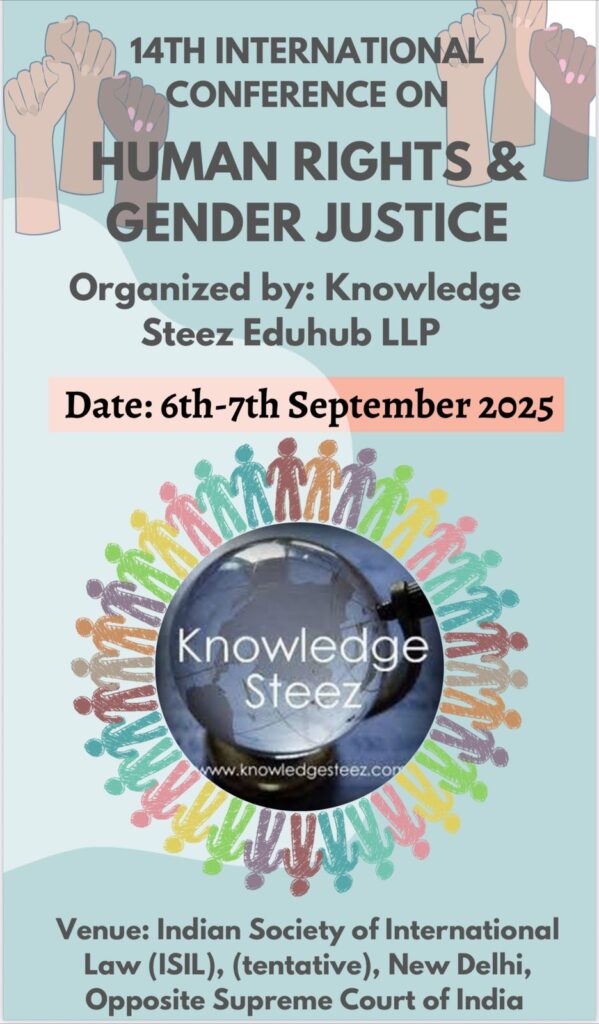The development of the internet in the 21st century has ushered in the era of digitalization. Digital technologies are now widely used in both daily living and daily crimes. Human connections, particularly communication, have been significantly impacted by the technology and information revolution. However, because of the development of this new technology, many different behaviours have emerged that are incompatible with what is legally acceptable. Cybercrimes are criminal offences that take place in the realm of digital technologies and cyberspace.
One such offence is known as revenge pornography, also known as non-consensual pornography or image-based sexual abuse, which refers to the act of sharing explicit or intimate images or videos of individuals without their consent, typically with the intent to cause harm, humiliation, or revenge. It is a form of cyber exploitation where intimate or explicit images or videos of individuals are shared without their consent, typically by a former partner seeking to cause harm or embarrassment. It is a deeply concerning issue that raises significant ethical and legal considerations.
The rise of the digital age has enabled the easy sharing and dissemination ofpersonal content, making revenge pornography an alarming concern. Victims of revenge pornography often experience severe emotional distress, damage to personal relationships, loss of employment opportunities, and even threats to their physical safety. The non-consensual sharing of explicit images violates the autonomy, privacy, and dignity of individuals, constituting a clear ethical violation.
This form of digital abuse has gained significant attention in recent years due to the rapid proliferation of technology and social media platforms.
- ETHICAL ANALYSIS:
i. Consent and Privacy: Revenge pornography violates the fundamental
principles of consent and privacy. Individuals have the right to control the
dissemination of their intimate images, and when those images are shared
without consent, it infringes upon their privacy and personal autonomy ii. Emotional Harm and Consent Withdrawal: Sharing intimate images without consent can lead to severe emotional distress, humiliation, and damage to an individual’s reputation. It also undermines the ability to freely and autonomously withdraw consent from intimate acts, as individuals may fear
the potential consequences if their images were to be shared in retaliation. iii. Dignity and Respect: Revenge pornography objectifies and dehumanizes individuals, treating them as mere objects of gratification or tools for revenge. It violates their dignity and respect, fostering an environment of exploitation
and humiliation.
İv. Gender Inequality and Power Dynamics: Revenge pornography disproportionately affects women and exacerbates existing gender inequalities. It perpetuates power imbalances within relationships and wider society, reinforcing harmful stereotypes and contributing to a culture of misogyny and sexism. - LEGAL ANALYSIS:
i. Criminalization: Many countries have enacted laws to criminalize revenge pornography. These laws typically focus on the non-consensual sharing of intimate images, recognizing it as a violation ofprivacy, harassment, or a form of sexual abuse. Penalties for revenge pormography vary, but they often involve fines, imprisonment, or both.
ii. Civil Remedies: Some jurisdictions provide civil remedies for victims of revenge pornography, allowing them to pursue legal action against the perpetrators. This can include seeking danmages for emotional distress, harm to reputation, or other losses suffered as a result of the non-consensual sharing of intimate images. iii. Online Platforms and Content Removal: Many online platforms have adopted policies to combat revenge pornography. They provide mechanisms for reporting and removing such content, aiming to prevent its dissemination and reduce the harm caused to victims. iv. International Cooperation: Revenge pornography is a global issue, and international cooperation is crucial in addressing it effectively. Some countries have established mutual legal assistance frame works to facilitate the investigation and prosecution of cross-border cases involving revenge pornography. The pain is intense and occasionally never ends. Nonetheless, it’s crucial to avoid technologically deterministic viewpoints and keep in account the human agents who use digital and social media platforms when trying to explain modern abuse. Revenge pornography is a growing crime that is made easier by social media and mobile technology: it is a crime committed by people and one to which the police must respond appropriately. Only a small part of the daily online sexual harassment takes place in the form of revenge porn. It poses a significant and growing threat to victims’ physical and online reputations. Even if the horror is imposed on the victims via mouse clicks, they nonetheless endure great bodily suffering because of it. Never give anyone access to your photos or videos. We must also provide a safe environment for people who have been injured by this, in addition to a strong legal framework. We should keep our devices updated, password-protected, and secure instead. Whenever such an incident occurs, the victim should file a complaint right away so that the video or photo can be taken down from the internet as soon as possible. To address such a heinous violation of hurman dignity, a comprehensive strategy must be developed that considers both the coercive force of law and non legal redressal possibilities. By strengthening legislation, raising awareness, and developing effective technological solutions, society can work towards mitigating the harmful impact of revenge pormography and protecting the rights and well-being of individuals in the digital age. While legal measures and policies are important steps in combating revenge pornography, it is essential to continue raising awareness, promoting digital literacy, and fostering a culture of consent and respect to tackling the underlying causes of this issue. It is worth noting that laws and policies may differ across jurisdictions, so it is important to consult the specific laws of your country or region for accurate and up-to-date information.
REFERENCES
- 7 Aug. 2021, www.ijlmh.com/wp-content/uploadswww.ijlmh.com/wp content/uploads/Revenge-Pomography-Legal -Framework-in-India-.pdf. Accessed 3 June 2023.
- “Revenge Pornography: Legal Framework in India – Intemational Journal of Law Management & Humanities” International Journal of Law Management & Humanities, www.ijlmh.com/paper/revenge-pornography legal-frame work-in-india/. Accessed 3 June 2023.
- Mali, Adv Prashant. “Rise of Revenge Porm in India by PRASHANT MALI” Academia.edu, 21 Oct. 2017, www.academia.edu/34920449/Rise_of_Revenge_Porn_in_India_by_PRAS HANT MALI. Accessed 3 June 2023.
- Legal, Tatva. 8 Aug. 2020, www.lex-warrierin/wp content/uploads/2020/08/www.lex-warrier.in/wp content/uploads/2020/08/Revenge-porn-need-for-comprehensive-legislation in-India.pdf. Accessed 3 June 2023
- www.cybererimejournal.com/pdf/www.cybercrimejournal.com/pdf/MihaSep ecVol1 3Issue21JCC2019.pdf. Accessed 3 June 2023.
- nujslawreview.org/wp-content/uploads/2022/03/nujslawreview.org/wp content/uploads/2022/03/14.4-Sharma-1 .pdf. Accessed 3 June 2023.
- ijlljs.in/wp-content/uploads/20 16/07/ijlljs in/wp content/uploads/2016/07/Rishika-JLLJS -Revenge_Pormography.pdf. Accessed 3 June 2023.
- 18 Apr. 2022., cibgp.com/cibgp.com/article_17621_6723161371 dee700d42643b8fa5b3410. pdf. Accessed 3 June 2023.
Article by –
Astitva Kumar Rao Dr. B. R. Ambedkar National Law University, Sonipat, HaryanaFirst Year Second Semester









